While the Pere Marquette and Empire Builder were the first post-war trains, the Rock Island holds the honor of being the only railroad allowed to introduce a new passenger train during the war. In January, 1945, the Twin Star Rocket began service from Minneapolis (Minnesota being the “North Star” state) to Houston (Texas being the “Lone Star” state). At 1,370 miles, the route also holds the distinction of being the longest north-south passenger route over the rails of one railroad in the U.S.
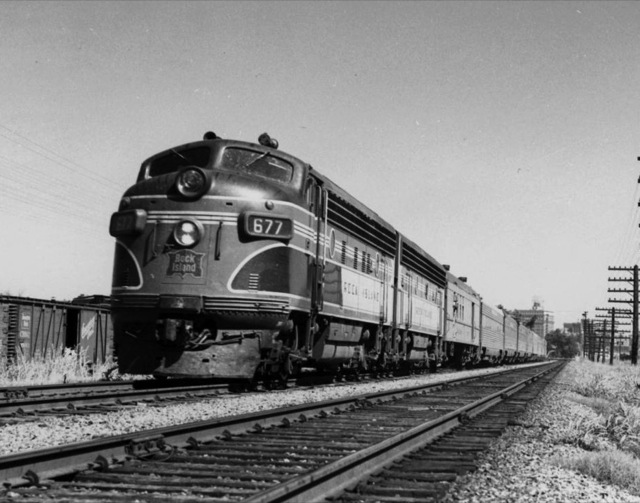
Inaugurated in January 1945, the Houston-Minneapolis Twin Star Rocket was the only new passenger train to go into service during World War II. Initially hauled by General Motors E6 locomotives, in this 1951 photo, it is being pulled by two E7s and consists of a heavyweight baggage car and eight streamlined cars.
The Twin Star Rocket was only moderately fast, requiring just over 25 hours (later increased to nearly 27 hours) for an average speed of about 54 mph (later reduced to 51 mph). This meant the railroad had to maintain three sets of equipment, one of which would be idle (after being cleaned and serviced) for most of a day.
If you rode the Twin Star Rocket, which went from Minneapolis to Kansas City in daylight hours and from Kansas City to Houston overnight, you might have eaten breakfast from the following menu, which is from the collection of the New York Public Library. Because the menu states that its prices comply with a 1943 federal regulation, the library dates the menu to that year, but in fact the menu would have to be from 1945 when the train began operation.
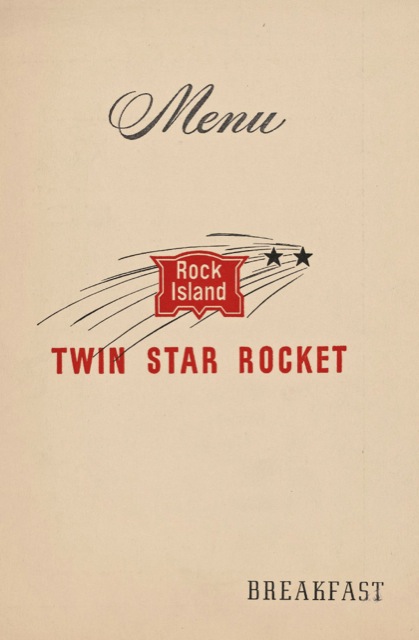
Click image to download a PDF of the front and back of this menu.
By 1947, the Rocket Island advertised that it had 22 streamlined trains operating on ten different routes, nine of which were labeled “Rockets.” However, this included the unfortunate Golden Rocket, one of “the trains that never was” as it was cancelled by partner Southern Pacific. Still, the remaining eight Rockets form an impressive list for a railroad that has almost completely disappeared today.
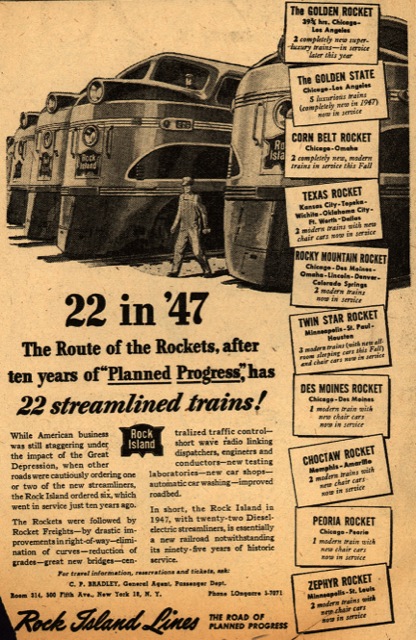
Click image to see a larger view.
Many of these trains included equipment from the original six Rockets that began operating in 1937, usually supplemented by additional cars to serve wartime and post-war traffic. The photo below shows the original locomotive and two of the original three cars of the Texas Rocket, along with at least four more cars.
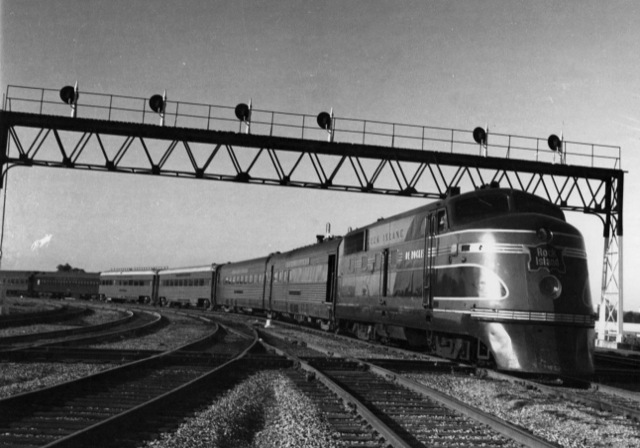
When it began service in 1937, the Houston-Ft. Worth Texas Rocket consisted of one of Rock Island’s elegant TA locomotives pulling a two-car articulated baggage-dinette-coach with a total of 108 revenue seats plus a 28-seat coach-lounge-observation car. This 1949 photo shows the TA pulling the articulated car, two more streamlined cars, and two heavyweight cars. Considering that the nine-car Twin Star Rocket above required 3,600 horsepower, this is quite a load for just one 1,200-HP locomotive.
If you rode one of the Rockets, the ticket agent probably stuffed your tickets into an envelope like the one below. This one appears to show E7 A and B locomotives pulling a train such as the Rocky Mountain Rocket (the only Rocket that approached mountains such as those in the picture frame), which insures that it dates from after 1945, when General Motors began making E7s.
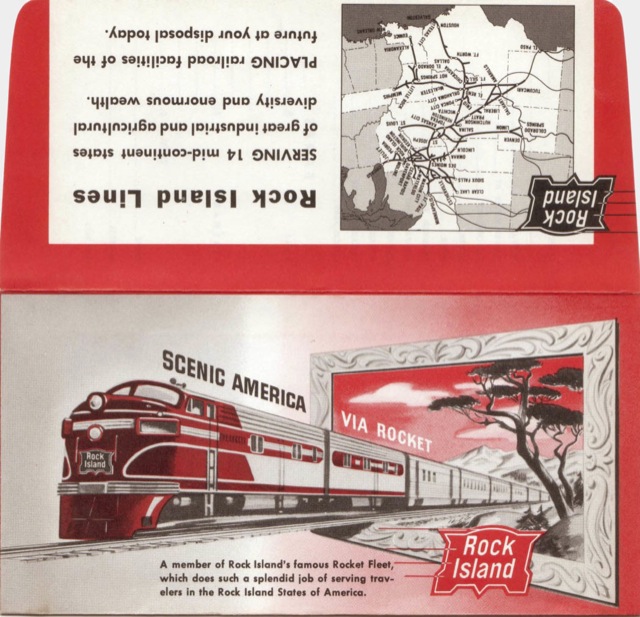
Click image to download a PDF of the front and back of this ticket envelope.
While on board, you might pen a letter to a friend using stationery supplied by the railroad with the following letterhead. Unlike the Burlington, which offered specific stationery sets for each of its Zephyrs, the Rock Island appears to have just used generic Rocket stationery.
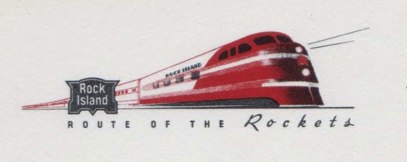
Click image to download a PDF of the first page of this piece of on-board stationery. Click here to download a PDF of the accompanying envelope.
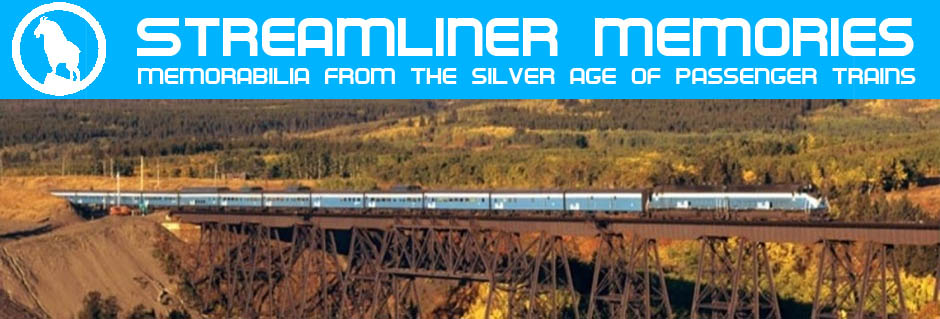
Sorry, I’m just now reading back to some of your older posts. A slight correction – the locomotive shown on the Twin Star Rocket is actually a boiler equipped F-7 rather than an E-7. #677 was part of a three engine order (675-677) placed in 1950 for passenger F’s to protect the various Rockets. It would have been nearly new in 1951, which is probably why it looks so clean.
Jim